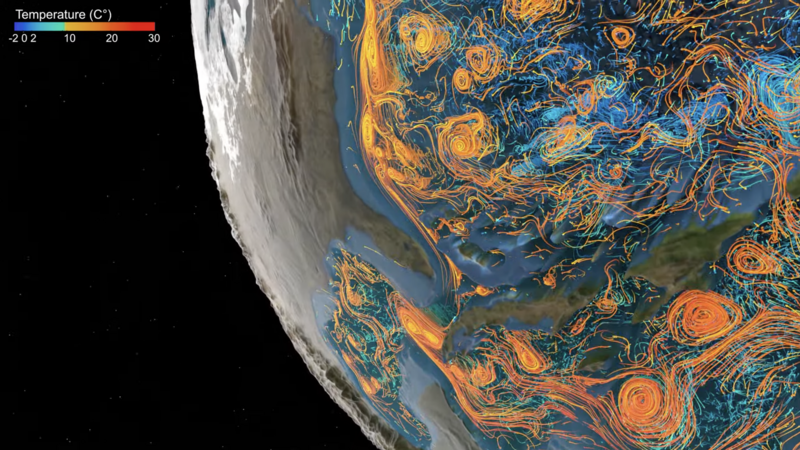Weaker ocean circulation could cost trillions
The North Atlantic Meridional Overturning Circulation (AMOC) transports warm water north from the Tropics and cold water back to the south, serving as a “radiator” for Europe’s climate. Until recently, economic research has considered a weakening AMOC to be beneficial, as this would cool the Northern Hemisphere in periods of global warming. “But a weakening AMOC would further accelerate climate change”, explains co-author and climate economist Felix Schaumann, Ph.D. candidate in Sustainability Economics at the University of Hamburg (UHH) and the Max Planck Institute for Meteorology (MPI-M).

What we already knew: when the Arctic ice melts, massive amounts of freshwater flow into the ocean. The seawater becomes diluted and less saline, a development that reduces its density and causes it to sink more slowly – and one that will likely slow the AMOC. Now, Schaumann and his colleague Eduardo Alastrué de Asenjo (MPI-M and UHH), have confirmed: as a result of this process, less carbon dioxide (CO2) is transported from the surface ocean to the deep ocean. More CO2 remains in the atmosphere, which accelerates global warming.
The social cost of carbon
“Our findings indicate that previous studies on AMOC weakening most likely underestimated the economic impacts,” says Schaumann. In global terms, the acceleration of climate change would produce more frequent and extreme weather events like heat waves, droughts and floods, leading to an increase in the social cost of carbon. This cost represents the damage caused by additional CO2 emissions, and the increase in the social cost of carbon could offset the economic benefits of the cooling that accompanies a weaker AMOC.
The findings are based on a global climate model in combination with an economic model that estimates economic costs along different scenarios of CO2 emissions. Using this approach, the experts created a first scenario based on the CO2development without any AMOC-related effects, and a second, which reflected various degrees of weakening. This allowed them to establish a direct connection between the strength of the AMOC and the amount of carbon the global ocean can take up.
Source: CEN/University of Hamburg
Further information
Visualization of the AMOC by the CEN Climate Visualization Laboratory on YouTube
Original publication
Schaumann, F., & Alastrué de Asenjo, E. Weakening AMOC reduces ocean carbon uptake and increases the social cost of carbon, Proceedings of the National Academy of Sciences, 122 (9) e2419543122, 2025. DOI: 10.1073/pnas.2419543122
Contact
Felix Schaumann
Max Planck Institute for Meteorology/University of Hamburg
felix.schaumann@mpimet.mpg.de
Eduardo Alastrué de Asenjo
Max Planck Institute for Meteorology/University of Hamburg
eduardo.alastrue-de-asenjo@mpimet.mpg.de
